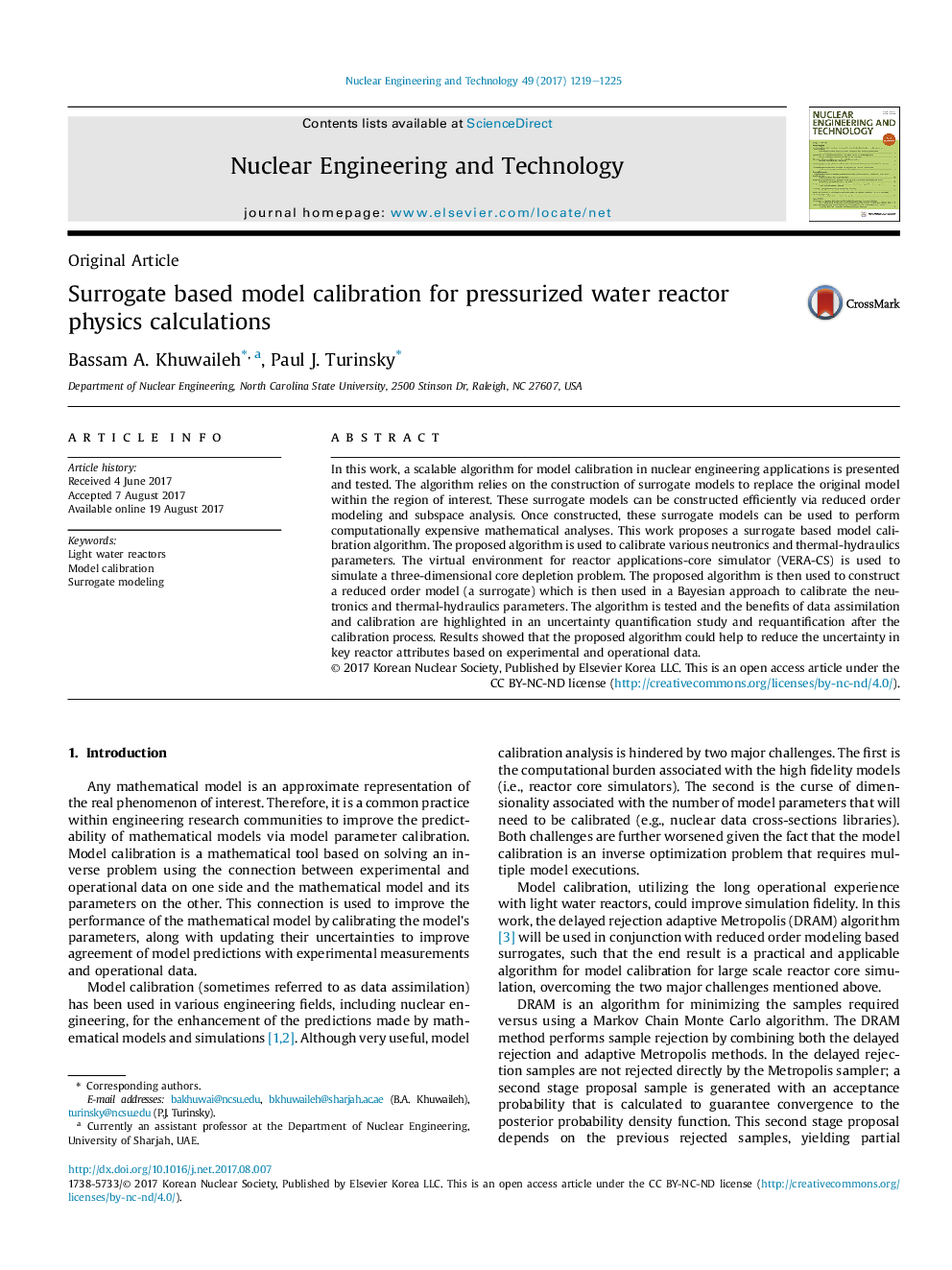| Article ID | Journal | Published Year | Pages | File Type |
|---|---|---|---|---|
| 5477879 | Nuclear Engineering and Technology | 2017 | 7 Pages |
Abstract
In this work, a scalable algorithm for model calibration in nuclear engineering applications is presented and tested. The algorithm relies on the construction of surrogate models to replace the original model within the region of interest. These surrogate models can be constructed efficiently via reduced order modeling and subspace analysis. Once constructed, these surrogate models can be used to perform computationally expensive mathematical analyses. This work proposes a surrogate based model calibration algorithm. The proposed algorithm is used to calibrate various neutronics and thermal-hydraulics parameters. The virtual environment for reactor applications-core simulator (VERA-CS) is used to simulate a three-dimensional core depletion problem. The proposed algorithm is then used to construct a reduced order model (a surrogate) which is then used in a Bayesian approach to calibrate the neutronics and thermal-hydraulics parameters. The algorithm is tested and the benefits of data assimilation and calibration are highlighted in an uncertainty quantification study and requantification after the calibration process. Results showed that the proposed algorithm could help to reduce the uncertainty in key reactor attributes based on experimental and operational data.
Related Topics
Physical Sciences and Engineering
Energy
Nuclear Energy and Engineering
Authors
Bassam A. Khuwaileh, Paul J. Turinsky,
